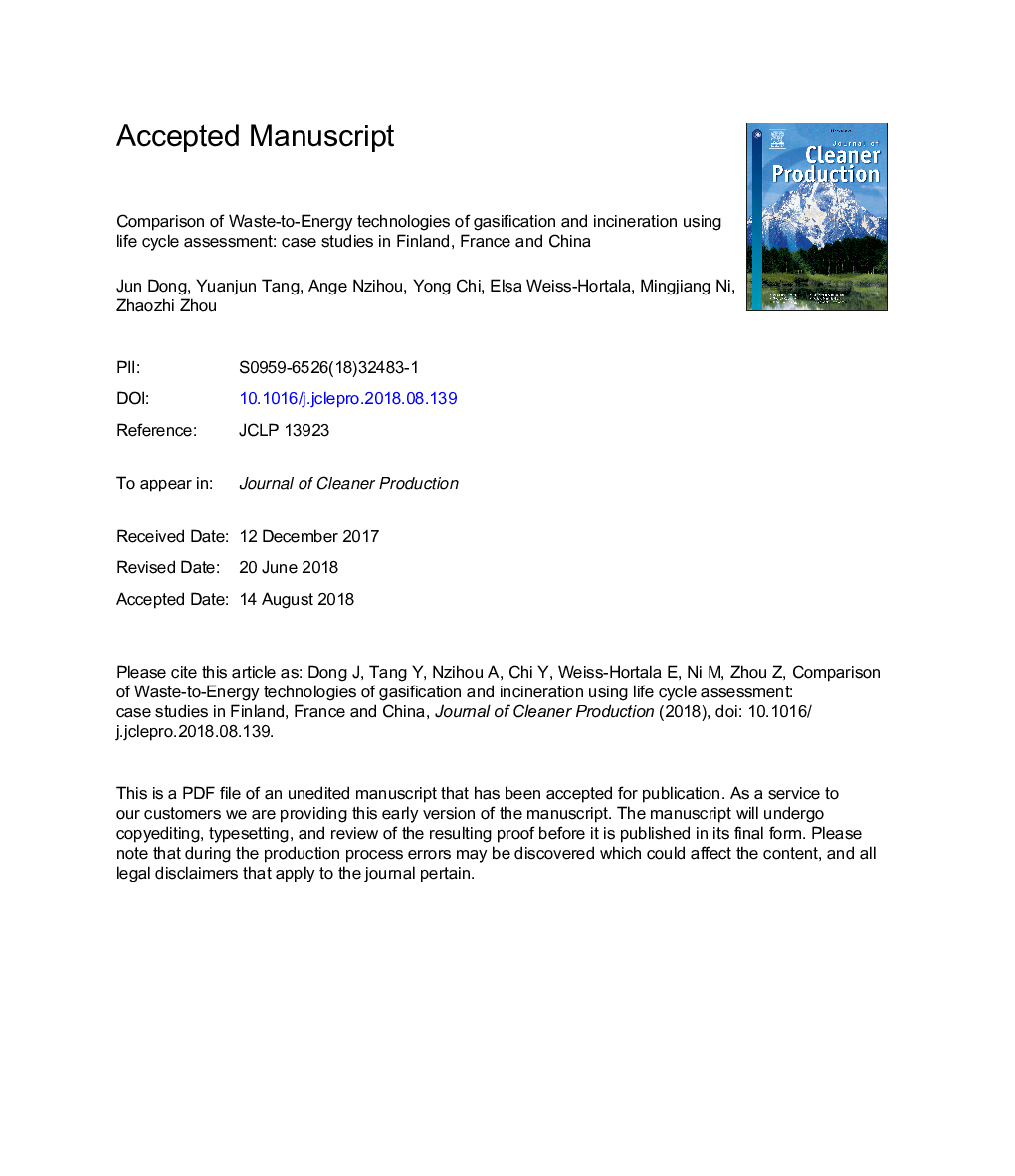| Article ID | Journal | Published Year | Pages | File Type |
|---|---|---|---|---|
| 8955731 | Journal of Cleaner Production | 2018 | 76 Pages |
Abstract
Waste-to-Energy (WtE) has gradually constituted one of the most important options to achieve energy recovery from municipal solid waste (MSW). However, the environmental sustainability of a specific WtE system varies with used technologies and geographic differences. As a result, three representative WtE systems are compared using life cycle assessment (LCA): a gasification-based WtE plant in Finland, mechanical-grate incineration in France, and circulating fluidized bed incineration in China. Results show that the overall environmental performance of the gasification system is better than incineration. The use of gasification technology, attributed to an intermediate syngas purification step, can provide benefits of both reducing the stack emissions and increasing the energy efficiency. Regional waste management, especially related to MSW caloric value and emission regulation, are determining factors for a preferable performance of the incineration in France over that in China. Sensitivity and uncertainty analyses further address key variations such as choice of MSW composition, basis of displaced electricity, energy recovery mode, and application of “best-available technology” dedicated to incineration. It is found that the most sensitive parameters influencing the LCA results are: electricity recovery, CO2 emission, and NOx emission. In the future, use of the source-separated high caloric waste combined with a more stringent emission standard can efficiently improve MSW incineration in China. Bottom ash recycling for metals and materials is highly applicable regarding incineration in France. This presented study can overall contribute to the development of specific WtE technology and local waste management plan for decision-makers.
Related Topics
Physical Sciences and Engineering
Energy
Renewable Energy, Sustainability and the Environment
Authors
Jun Dong, Yuanjun Tang, Ange Nzihou, Yong Chi, Elsa Weiss-Hortala, Mingjiang Ni, Zhaozhi Zhou,
